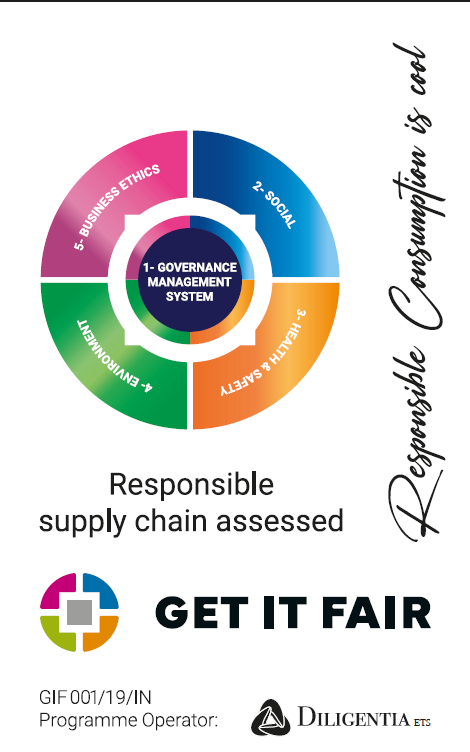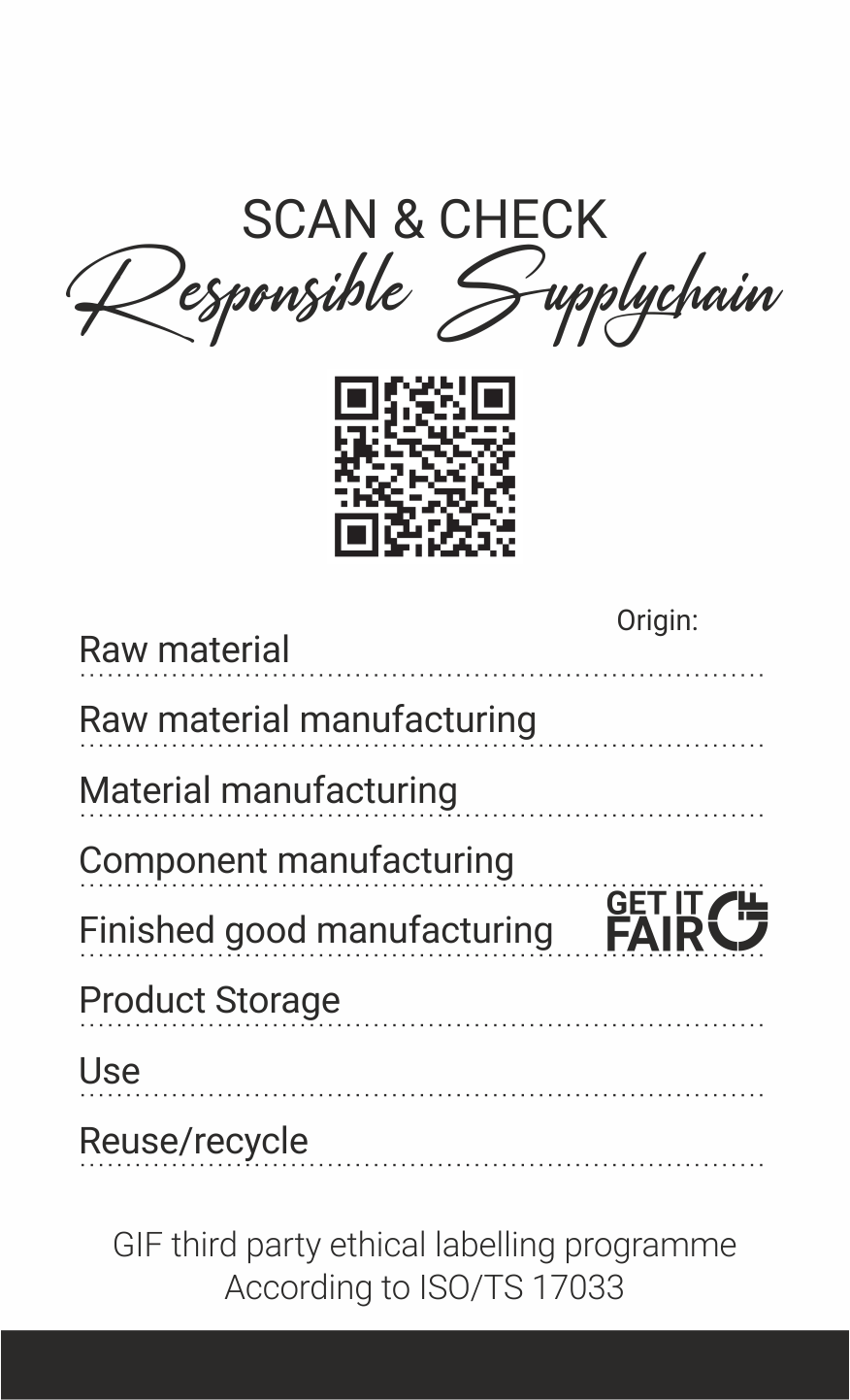What is GIF Ethical Label
“Where an ethical claim is produced within a programme, the scope of the programme is clear and define whether or not the programme is limited (or applicable) this information shall be transparent and communicated” in the form of Ethical Label (ISO 17033).
The “GIF Responsible Organization” claim reflects the acceptable exposure level to risks related to social responsibility issues.
GIF Ethical Label is the most important marketing oriented output of the programme because can be used in association with a specific product/service at the point of sale to make available to customers/consumers information regarding the number of GIF Responsible Organization validated in the supply chain.
The GIF Ethical Label support and improve the competitiveness of responsible supply chains suppoerted by an effective traceability system referring to international standards (e.g UN/UNECE).
How does it works
The GIF ESG Rating scheme enables organizations to use the GIF Ethical Label (in compliance with ISO/TS 17033) and allows consumers to Responsible Consumption by providing the following information at the point of sale.

Firstly a clear indication of the scope. Secondly the identification of the life cycle stages that are covered. Thirdly, an unambiguous indication (e.g. a link to a web site or a QR code) of how to access to supporting information which can be on a web site, at the point of sale or any other publicly available communication medium.
Therefore , an organization can place the GIF label in the following, but not limited to, media:
- product’s packaging
- product’s catalogue
- instructions, manuals and catalogues
- product literature and technical bulletins
- advertising and publicity
- media marketing, displayed at the point of sale
- websites
Responsible supply chains labelling
According to ISO 17033 the ethical label specifies the life cycle stage/s that is/are covered. For example the ethical label on a garment covers the “finished product” stage. What about the cotton harvesting, yarn, fabric, dying and button mananufacturers?
However, consumers would like to chose a product on the basis of the number of its life cycle covered by a third party Due Diligence. Therefore, from the consumer perspective, the key questions is: How many companies providing raw materials, semi-finished goods, components, parts, services and finished products are Responsible Organizations? How many stages of product life cycle stages the ethical label cover?
In other words, consumers look for responsible supply chains according to the following principle: the higher the number of life cycle stages covered by the ethical label, the greater is the responsibility of the product supply chain.
Therefore, GIF Ethical Label allows organizations to link suppliers and customers. This allows to provide final customers/consumers with a powerful tool to select and purchase products realized by responsible supply chains.
In conclusion, the GIF Ethical Label enables a win-win game involving all manufacturers in the same supply chain contributing to specific product’s realization.
